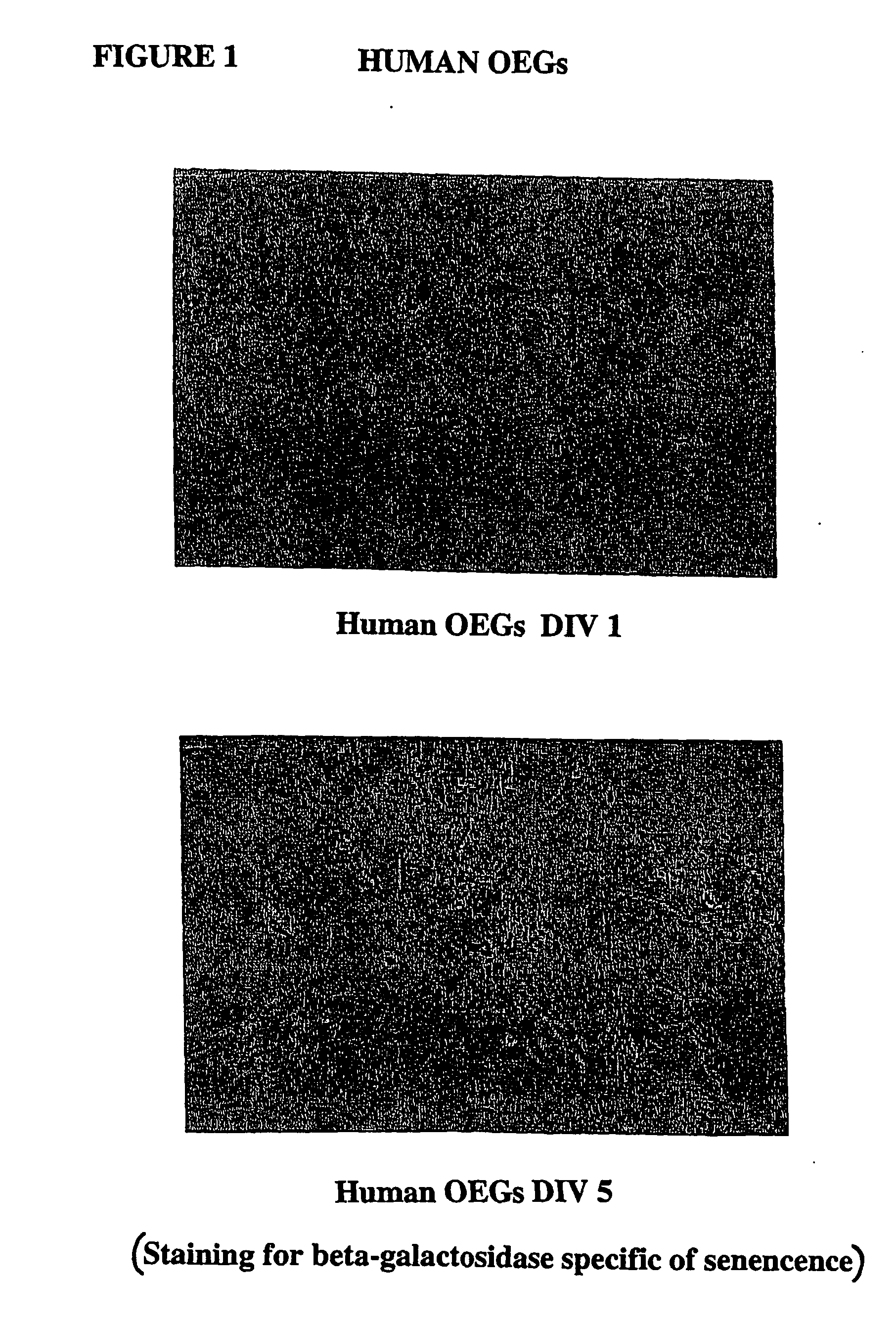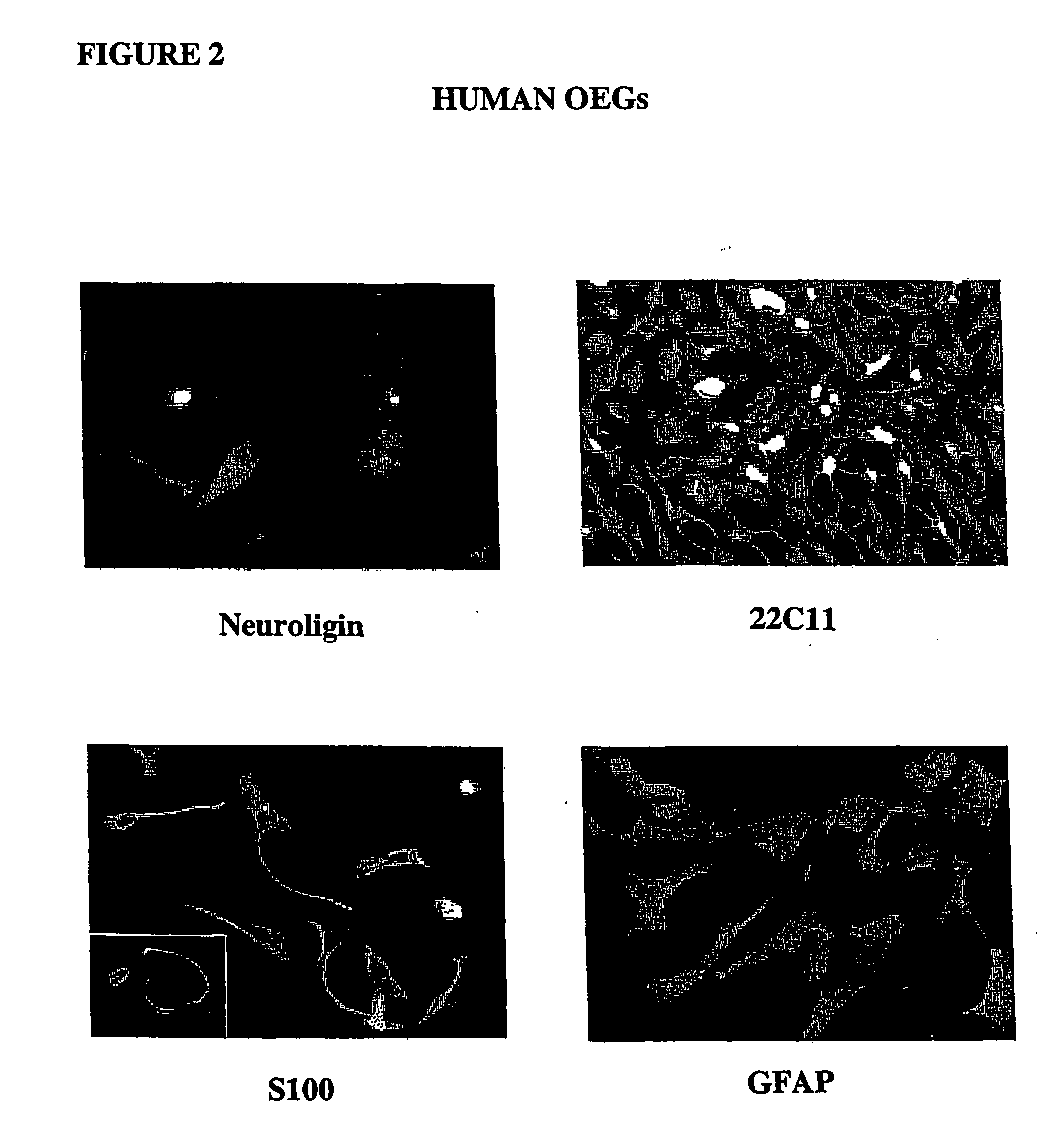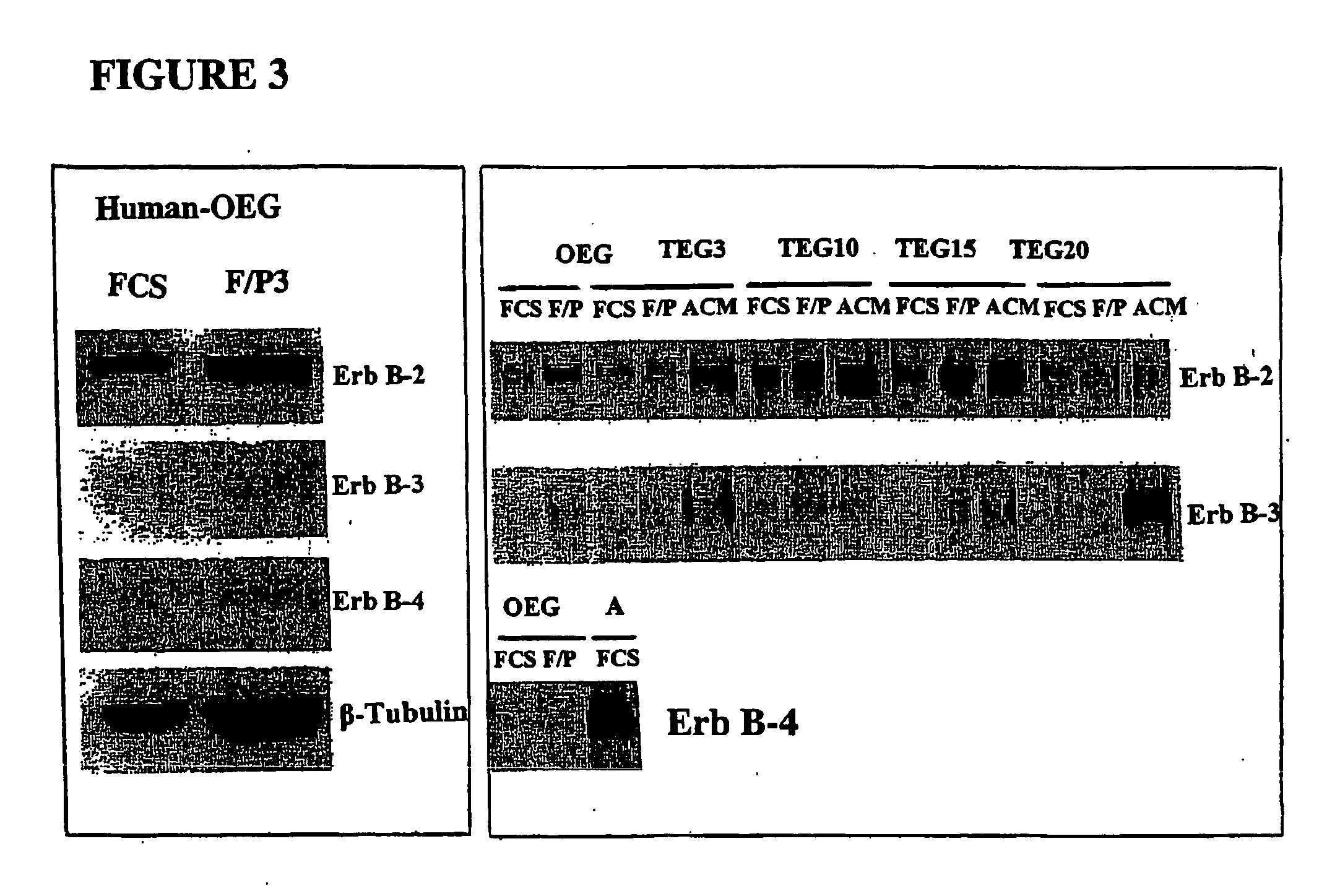Reversibly immortalised olfactory ensheathing glia and their use to promote neuronal regeneration
a technology of olfactory ensheathing glia and neuronal regeneration, which is applied in the field of neuronal regeneration, can solve the problems of low efficiency of re-entry in cns tissue distal to the lesion, inability of adult central nervous system (cns) neurons to regenerate, and inability to obtain a sufficient population
- Summary
- Abstract
- Description
- Claims
- Application Information
AI Technical Summary
Benefits of technology
Problems solved by technology
Method used
Image
Examples
example 1
Reverse Immortalization of Human Primary OEG Cells Using the Cre / Lox System
[0073] In the protocols described in this example, human OEG cells were immortalised using a recombinant lentivirus containing the gene encoding SV40Tag flanked by Loxp sites. Cells were characterized before and after treatment with a recombinant adenovirus capable of transferring the gene encoding the Cre-recombinase to determine whether this approach could produce an OEG cell line that would be useful clinically for transplantation.
[0074] Human cells were obtained from post-mortem human tissue from adult donors. The tissue belongs to male and female adults donors, from the olfactory bulb; the external layer was dissociated and digested with 0.1% trypsin. The donor's age appears to be no limitant for the success of the culture. The tissue was washed with sterile phosphate-buffered saline (PBS) solution containing. antibiotic (penicillin / streptomycin) and anti-fungi (Primocin). Then, the tissue was subjecte...
example 2
Adult Retinal Axonal Regeneration Assay
[0078] The promotion of axonal regeneration from adult rat retinal ganglion neurons (RGN) is used as a standard procedure determining regeneration capacity in cell culture. This method reflects the in vivo reparative properties of OEG cells, more closely than other neuritogenic assays.
[0079] Briefly, the method used was as follow: retinas were dissected from P60 rat eyes, dissociated and digested with 0.1% trypsin. Digestion was stopped with 2 mg / ml of soybean inhibitor of trypsin, and a fine suspension of cells was obtained by passing the digested material through Pasteur pipettes of decreasing diameters. Cells were centrifuged and resuspended in a defined medium (Moreno-Flores et al., 2003). RGN were plated on monolayers of glial cells: primary OEG or in the established cell lines.
[0080] For immunocytochemistry, neuronal-human OEG cells mixed culture were fixed with 4% paraformaldehyde, after seven days of culture. FIG. 4 shows the axonal ...
PUM
 Login to View More
Login to View More Abstract
Description
Claims
Application Information
 Login to View More
Login to View More - R&D
- Intellectual Property
- Life Sciences
- Materials
- Tech Scout
- Unparalleled Data Quality
- Higher Quality Content
- 60% Fewer Hallucinations
Browse by: Latest US Patents, China's latest patents, Technical Efficacy Thesaurus, Application Domain, Technology Topic, Popular Technical Reports.
© 2025 PatSnap. All rights reserved.Legal|Privacy policy|Modern Slavery Act Transparency Statement|Sitemap|About US| Contact US: help@patsnap.com



